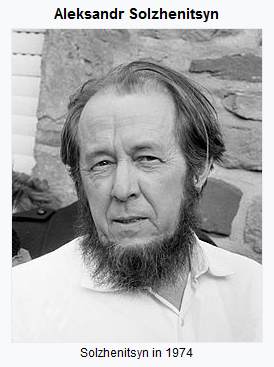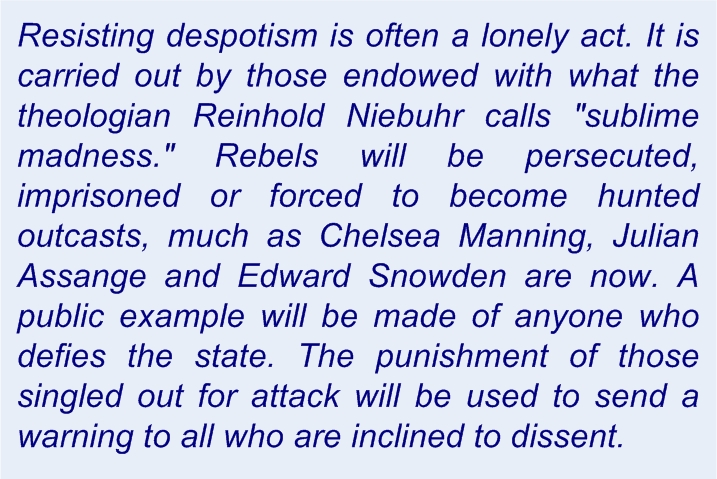Timely observations on the end of freedom
By Chris Hedges [Excerpt: Read full column in OpEdNews.com here.]
 “Right totalitarianism, left totalitarianism, any way you look at it you lose.” — Editor… from a really good song by Simon and Garfunkel
“Right totalitarianism, left totalitarianism, any way you look at it you lose.” — Editor… from a really good song by Simon and Garfunkel
###
Alexander Solzhenitsyn in “The Gulag Archipelago,” his profound meditation on the nature of oppression and resistance in the Soviet gulags, tells the story of a man who was among prisoners being moved in the spring of 1947. The former front-line soldier, whose name is lost to history, suddenly disarmed and killed the two guards. He announced to his fellow prisoners that they were free.
“But the prisoners were overwhelmed with horror; no one followed his lead, and they all sat down right there and waited for a new convoy,” Solzhenitsyn writes. The prisoner attempted in vain to shame them. “And then he took up the rifles (thirty-two cartridges, ‘thirty one for them!’) and left alone. He killed and wounded several pursuers and with his thirty-second cartridge he shot himself. The entire Archipelago might well have collapsed if all the former front-liners had behaved as he did.”
 The more despotic a regime becomes, the more it creates a climate of fear that transforms into terror. At the same time, it invests tremendous energy and resources in censorship and propaganda to maintain the fiction of the just and free state.
The more despotic a regime becomes, the more it creates a climate of fear that transforms into terror. At the same time, it invests tremendous energy and resources in censorship and propaganda to maintain the fiction of the just and free state.
Poor people of color know intimately how these twin mechanisms of fear and false hope function as effective forms of social control in the internal colonies of the United States. They have also grasped, as the rest of us soon will, the fiction of American democracy. Continue reading
